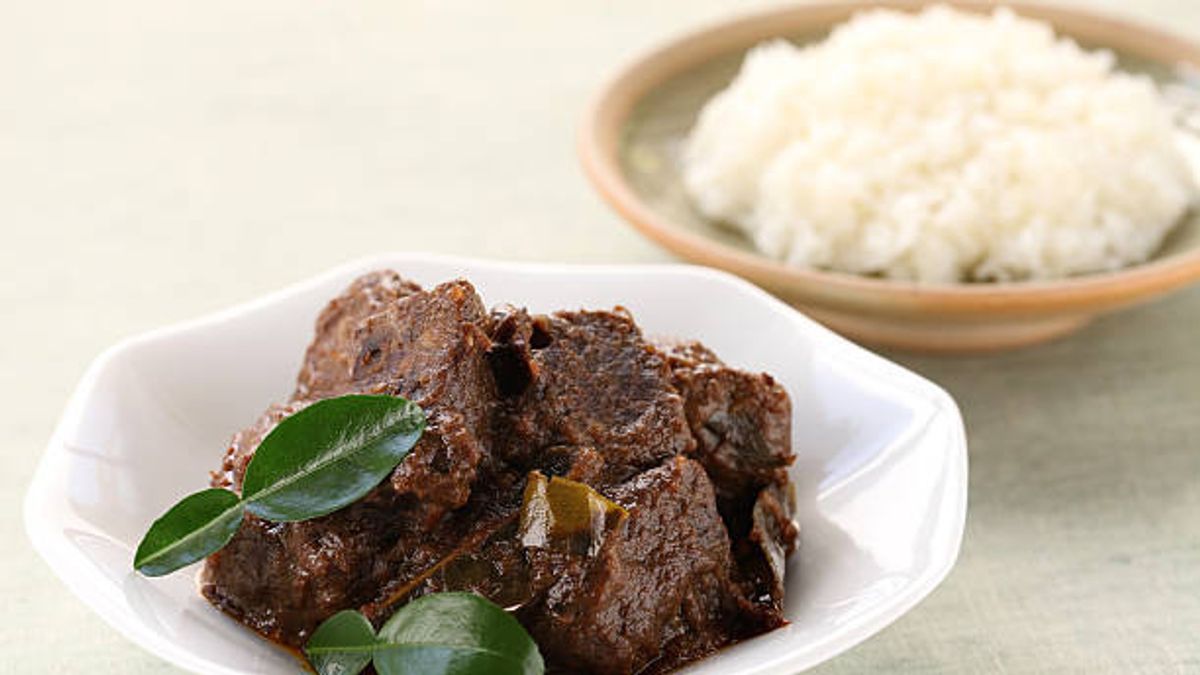Rendang is a traditional dish from Indonesia, specifically from the Minangkabau ethnic group of the West Sumatra province. It is a staple in Minangkabau cuisine and is often served during special occasions and festivals, such as weddings and religious holidays.
The origins of rendang can be traced back to the 16th century, during the time of the Minangkabau Kingdom. At that time, rendang was served to royalty and nobility as a symbol of wealth and status. It was made with the best cuts of beef and a variety of spices, including cinnamon, star anise, and cardamom.
Over time, rendang became more widely available and popular among the common people. Its recipe evolved as different regions and families added their own twist to the dish. However, the basic ingredients and cooking techniques remained the same, with the slow-cooking process being the key to achieving the dish's signature rich and complex flavors.
Today, rendang is a popular dish not only in Indonesia but also in other Southeast Asian countries like Malaysia and Singapore, as well as in other parts of the world. It has even gained global recognition as one of the most delicious foods in the world, thanks to its unique taste and texture.
One of the reasons why rendang is so popular is its rich and complex flavors. The dish is made with a combination of aromatic spices and herbs, including turmeric, galangal, lemongrass, ginger, and chili peppers, which give it a unique flavor profile that is both spicy and savory. The meat used in rendang is typically beef, although other meats like chicken and lamb can also be used.
To make rendang, the meat is first browned in a pan and then simmered in a coconut milk-based sauce along with the spices and herbs. The dish is cooked slowly over low heat for several hours until the sauce has thickened and the meat is tender and flavorful.
The slow-cooking process is essential to achieving the signature texture of rendang. As the meat simmers in the sauce, it absorbs all the flavors and becomes tender and juicy. The sauce, meanwhile, thickens and intensifies in flavor, resulting in a rich and creamy dish that is bursting with umami.

Rendang is typically served with steamed rice, which helps to balance out the spiciness of the dish and soak up the flavorful sauce. It can also be enjoyed on its own as a main dish or as part of a larger meal.
In addition to its delicious taste, rendang also has cultural and social significance in Indonesia. It is often served during special occasions and celebrations as a way of bringing people together and sharing in the joy of the occasion. It is also an important part of Minangkabau culture and identity, and is often used as a symbol of the region's rich culinary heritage.
In conclusion, rendang is a delicious and complex dish that has a rich history and cultural significance. Its unique combination of spices, tender meat, and creamy sauce make it a favorite among people around the world. Whether you're a food lover or a history buff, rendang is a dish that is sure to satisfy both your taste buds and your curiosity.



















